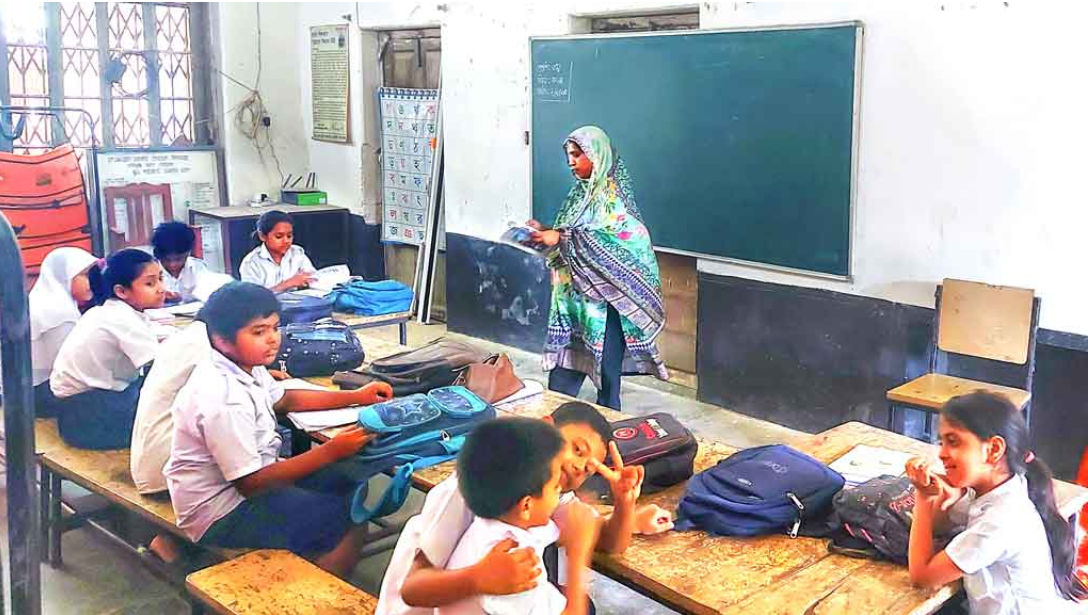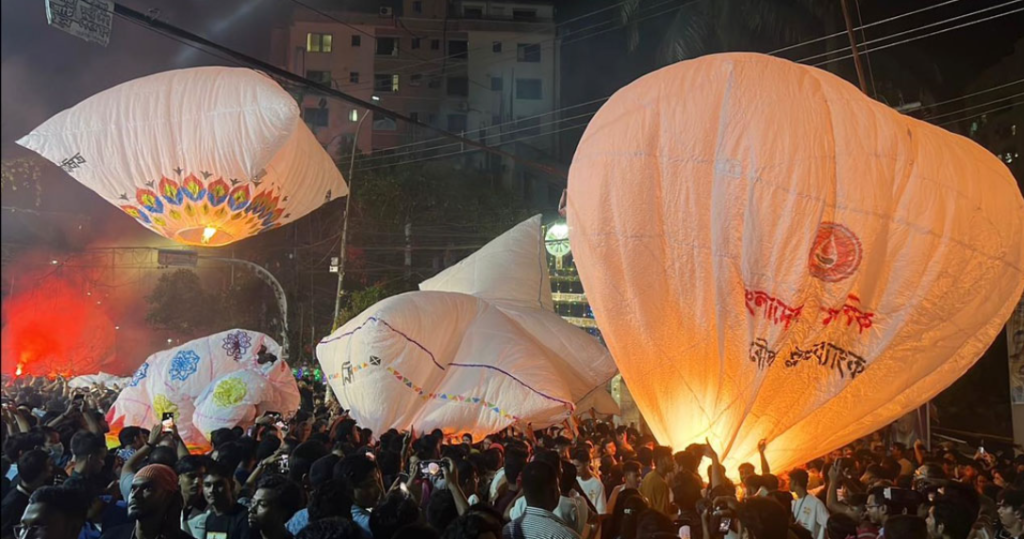Desk Report:
KN Road Government Primary School is located on V.E.D. Road in Gaibandha city. The school, established 63 years ago, is densely populated. As such, the classrooms should be packed with students. But the reality is different. There are only 40 students from kindergarten to fifth grade in this school.
The number of students by grade is 11 in kindergarten, 7 in first grade, 4 in second, 5 in third, 4 in fourth, and 5 in fifth grade. However, the school has 6 teachers and 2 employees. Although the number of students is almost zero, there is no teacher shortage. However, the teachers are not willing to talk to the media about this. They say that the District Primary Education Office is aware of this and the teachers have nothing to do about it.
According to the Primary Education Office, there are 3,704 students enrolled in the 16 government primary schools in the city. Of these, 2,500 are regular students. Except for six schools, the rest are practically devoid of students. However, there are sufficient teachers.
On the other hand, the opposite picture is seen in private institutions in the city. There are about 12,000 students in 12 institutions. The attendance rate is 98 percent. Of these, Shah Ahmed Uddin Shishu Niketan School and College has about 2,100 students. GUK Residential School and College has 400 students from nursery to fifth grade. And SKS School and College has 526 students at the same level.
Recently, a visit to KN Road Government Primary School showed that the school has adequate infrastructure. A total of seven rooms including an office room. Six of them are classrooms. Despite that, two teachers were sitting next to the second and third grade students in the same room taking classes. Anima Begum is teaching second grade mathematics and Razia Sultana is teaching third grade English. When asked, the teachers said, “There are very few students in the class, so the two of us are taking classes together.”
Locals complain that the school has never been able to achieve good results for 63 years. However, the teachers are working by ‘managing’ the officials and submitting fake reports. Local Humayun Sarkar said, “Along with the irregularities, there is also no learning environment. That’s why no one admits. Education department officials are silent despite knowing everything.” Locals say they are trying to restore the learning environment. They have gone door to door to admit students; but the results have not been found. They are also disappointed because they have not found students.
When asked, the school’s headmaster, Ms. Wahida Shirin, said, “Everyone concerned knows about the matter. We are trying to increase the number of students.” She evaded the question of taking classes in two subjects in the same room, citing illness.
Similarly, 203 students are admitted to the PTI-affiliated Parikshan Government Primary School. Of them, 160 take regular classes. 160 are admitted to Uttarpara No. 2 Government Primary School, 120 are regular. Thus, the situation is the same in most government primary schools in the city. There are enough teachers; but there are no students.
Parents say they are more inclined to admit their children to kindergartens and NGO-run institutions than to government schools. Parents are admitting their children there because of the infrastructure, publicity and name of these institutions.
Asaduzzaman Government Primary School headmaster Nurel Nazma Shakil said, “Not getting students is our failure. We could not convince the parents that good results can be achieved by studying in government schools. Due to the reluctance of the parents, government schools are suffering from a student crisis.”
Parent Ismail Hossain said, “The quality of education in government schools is poor. Teachers do not take classes regularly. That is why many parents like me do not want to send their children to government schools.”
When asked, Professor Ferdous Alam of Palashbari Adarsh College said, “To bring back students, government schools have to prove that they can achieve better results than private institutions. They need to keep in regular contact with the parents. The heads of institutions spend unnecessary time skipping school and going to the upazila education office, this must be stopped.”
When asked about this, District Education Officer Laxman Kumar told Ajker Patrika, “There is a student crisis in several schools in the city. Efforts are being made to increase the number of admissions in institutions where there are fewer students at the district and upazila levels.”




